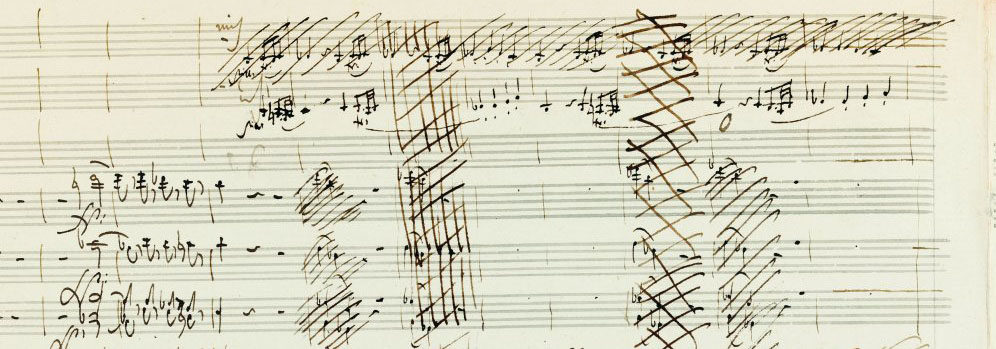Making Overtures: Ternary Form
The progression of melody, harmony, rhythm and timbre in a great piece of music creates a sound-world that can seem perfect and inevitable. So, it’s easy to believe that composers simply write their music in exactly the order that we hear it, beginning to end. You may be surprised to learn that it rarely happens this way. Composers typically rewrite and revise within an overall framework.

Our experience of listening to music is enhanced the more we know about what the composer was imagining. Like painters, sculptors, choreographers, novelists, poets, architects and even gourmet chefs, composers work within a form: the shape or plan for their creation. Formal structure applies to the big picture as well as the details, and recognizing that structure helps us appreciate any work of art.
Of the standard forms that composers use, Ternary form may be the most common. If you guessed that this term refers to music divided into three sections, you are humming the right tune. Ternary form consists of an opening section (denoted “A”), followed by a contrasting “B” section, and ending with a repeat of the “A” section. Twinkle Twinkle Little Star is a perfect brief example.
Ternary form is solid and satisfying. In essence, it establishes where we are, takes us to a new place, then brings us back again in the end — like the experience of life itself. We can all relate to it.
The four-minute third movement “Menuetto” of Mozart’s Symphony No. 39 in E Flat major is an example of Ternary form in symphonic music. The movement’s three sections are subtitled Minuet, Trio, Minuet (Click here to listen on Spotify or here to listen on YouTube).
The Minuet (“A” section) begins with a driving rhythm in the winds and brass accompanying a choppy melody in the violins, whose notes jump around enough to make it rather challenging to hum even a few bars. The Trio (“B” section) offers new material: we hear a solo clarinet expressing a sweet, singable melody, echoed around the orchestra. The Minuet then returns, heralded by the driving, choppy patterns as the lively “A” section closes the movement. Within this overall A-B-A format, each section follows an organized plan of thematic statements that are repeated.
You may notice this basic template in other art forms. The Indiana Statehouse, for example, contains a celebrated representation in local architecture. The eastern “A” section contains offices for the House of Representatives, and the Senate is located in a similar “A” section on the west side. Between the two lies the “B” section dome.
The beautiful Three Graces sculpture at the end of the allée at Newfields suggests Ternary form with the taller figure in the center, flanked by two shorter figures on the sides. This example offers a slight variation with one lifted foot. Composers sometimes like to change it up a little bit too, as a departure can make the music memorable!
Whenever you see Menuetto or Minuet in a musical program, you can anticipate the pleasure of connecting with the composer by recognizing this classic structure. Happy listening!

The Indiana State Capitol building 
The Three Graces at Newfields